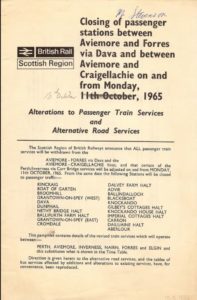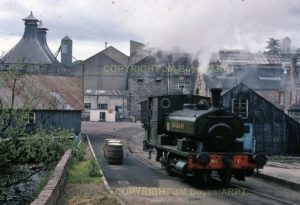
We have complied a list of the Frequently Asked Questions 2019
please click the title below to find out more »
Aberlour?
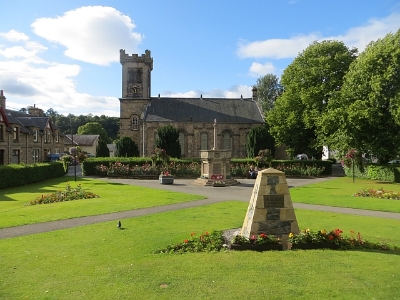
- The earliest settlers were located around the mouth of the Lour burn
- Prehistoric remains are scattered throughout the area where the Lour Burn runs into the River Spey
- Several examples of the chamber cairns common throughout Northeast of Scotland are to be found near Hatton Farm and Gownie
- Unique Clava Cairns (that have come south from Inverness) can be found at Upper and Lower Lagmore and Marionburgh at Ballindalloch
- Pictish symbol stones can be seen at Mortlach Church in Dufftown and at Inveravon Church
- The first recorded settlements at Aberlour were Lochlin or Incrimm and then Skirdustan, in reference to the Christian missionary Saint Drostan
- The gable of the old Kirk of Skirdustan dating back to 1226 can be found in the kirkyard
- A site recorded as Abirlaur is shown in this location on maps in Joan Blaeu’s Atlas of Scotland, from 1654
- Bonnie Prince Charlie’s army crossed the Spey at Milford and camped at Knockando churchyard on the way to Culloden
- The modern village, Charlestown of Aberlour, was founded by Charles Grant of Wester Elchies in 1812, named after his son Charles
- In August 1829, Aberlour was devastated by ‘The Muckle Spate’ or The Moray Floods, caused by torrential rain that persisted for two whole days and affected the Nairn, the Findhorn, the Lossie as well as the Spey
- The new Statistical Account of 1845 says: ‘People of Aberlour are sober and industrious in their habits. They are neat and clean in their persons and temperate in their diet. They are not behind their neighbours in shrewdness and intelligence.’
- James Fleming, a distiller, was a great benefactor to the village, establishing the Fleming Hospital (1900), the Fleming Hall and the Victoria Bridge, built in 1902 after a tragedy took place following capsizing of the ferry in 1898
- Aberlour Child Care Trust, one of Scotland’s main children’s charities, is named after Aberlour Orphanage founded by the Episcopalian minister Charles Jupp in 1875 and closed in 1967, having cared for nearly 7000 children
- Modern employment focuses on agriculture and tourism, and particularly on local distilleries as well as Walkers shortbread, regularly commended in local and national industry and export awards.
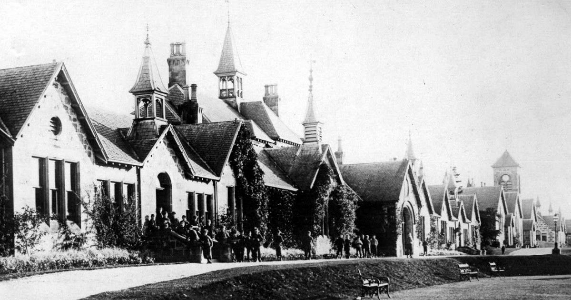
Aberlour Orphanage
Speyside?

- The name Spey is derived from the Gaelic ‘Spe’ meaning sputum from the frothy foam of its current.
- The Spey is 107 miles long, is the fastest flowing river in Scotland, the third longest river in Scotland and the ninth longest river in Britain
- The Spey flows from Loch Spey in Corrieyairack Forest down through Strathspey and Speyside to its mouth at Spey Bay in the Moray Firth
- Locals were employed as Floaters through the eighteenth and nineteenth centuries to float rafts of timber felled in Rothiemurchus down to the shipbuilders at Kingston, at the mouth of the Spey
- The Speyside Way follows the old railway line and runs 65 miles from Buckie on the Moray Firth south-west to Aviemore on the edge of the Cairngorm Mountains; there is also a 15-mile spur to Tomintoul from Ballindalloch
- The Speyside Way is one of four official Long Distance Routes in Scotland, with the West Highland Way, the Southern Upland Way and the Great Glen Way
- The Speyside Way was first opened in 1981, running from Spey Bay to Ballindalloch, with the Tomintoul spur being added in 1990
- A northern extension from Spey Bay to Buckie was opened in 1999, with the route being further extended from Ballindalloch to Aviemore in April 2000
- A 6.5 mile route extension to Kincraig and the 11-mile Badenoch Way were opened in 2015, and plans are in hand to complete the route to Newtonmore
- The stretch of the Speyside Way between Fochabers and Ballindalloch and between Nethybridge and Aviemore is suitable for cycling
- There are two free camping areas on the Speyside Way (Fiddich Park, Craigellachie and Ballindalloch Station), and wild camping is legal in compliance with the Scottish Outdoor Access code
- The Moray Way which links existing walks, about half of the Speyside Way, the whole of the Dava way and two thirds of The Moray Coastal Trail to complete a 96 miles (153 k.) long distance walk can be walked in six to nine days (see morayways.org.uk)
- North East 250 is a new road route taking in Speyside, Cairngorm National Park, Royal Deeside, Aberdeen city, the Buchan coast and the Moray Firth.
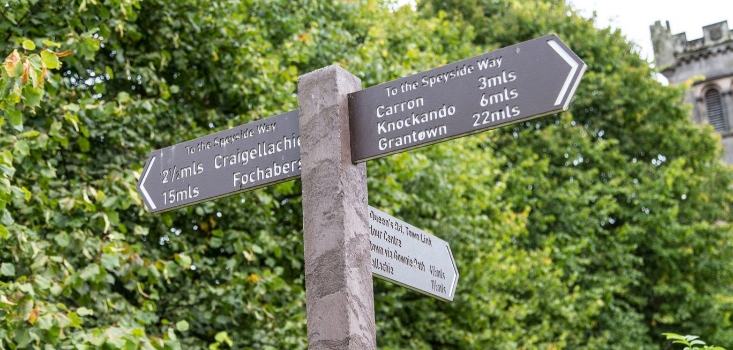
The Speyside Visitor Centre?
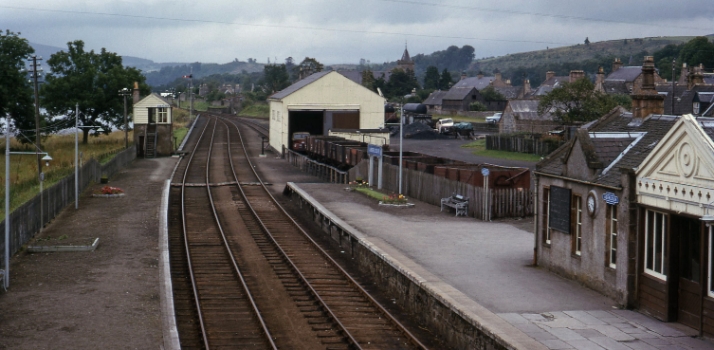
- Originally Aberlour Railway Station with the SVC being built onto the station building and operated by The Moray Council as the Speyside Way Visitor Centre in 2005
- SVC was transferred by Community Asset Transfer to ownership of Aberlour Community Association in 2016, having been run by ACA since 2014
- The CAT included the Old Station Tearoom which had been run by ACA volunteers since 1980
- The SVC & Tearoom are now organised and staffed entirely by volunteers from Aberlour and vicinity
- The statistical analysis of visitor numbers logged on a weekly basis between 2014 and 2018 demonstrates that the Centre is on a steadily increasing upward curve; in the last full season the Centre passed the 6,000 mark and welcomed 6,376 visitors – a 13.4% increase over 2017, the best ever year, roughly constituting 30% more than 2015.
Alice Littler Park?
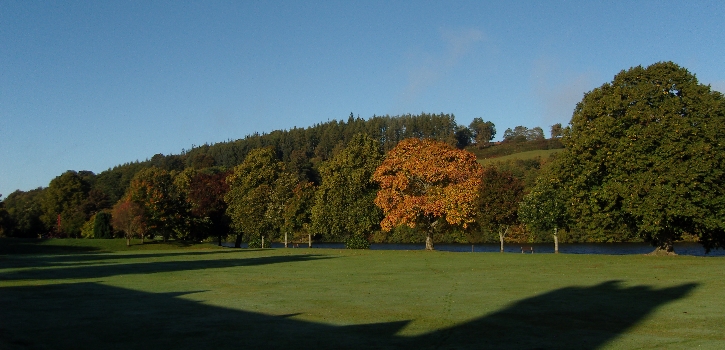
Alice Littler Park
- Having purchased the Orphanage Estate following its closure in 1969, Sydney Littler set up the Alice Littler Memorial Trust and bequeathed parcels of land to benefit the community of Aberlour and to establish the Alice Littler Park in memory of his late wife
- Creation of the Park and Car Park took place during 1979/80 with funding from The Scottish Development Agency
- To complement this new facility the former Station Building and Public Toilets were refurbished with finance from Moray District Council, The Countryside Commission and The Alice Littler Memorial Trust itself
- On 2 August 1980, the ALP and Building were officially opened by Sydney Littler, with the Park being designated the permanent home of Aberlour Strathspey Highland Games, of which he was then Chieftain
- On 4 August 1999, the Playpark adjoining the Park, created by Aberlour Community Association and leased from Moray Council, was opened
- In May 2017, Moray Council informed ACA that they had taken over ownership of the Park under the Long Leases (Scotland) Act 2012, property legislation passed in 2015 as part of ongoing Scottish Government programme of land reform
Public Transport?

- Stagecoach service 36 between Elgin and Dufftown runs approximately every hour via Aberlour from 07.13 to 19.13 (a timetable is available at the bus stop in the Square)
- No buses run south beyond Aberlour
- No buses run on Sundays
- Taxis are available locally (£60 to Grantown)
- Dial a Bus service can be booked a day in advance:
- All Dial M journeys must be pre-booked by phoning our booking line on 0300 123 4565.
- Bookings can be accepted up to 4 weeks in advance but must be made no later than 3pm the day before your pick up time. The booking line is open from 8.45am to 5pm, Monday to Friday. Bookings cannot be accepted for any journey which may be undertaken on an existing local service bus journey or connecting journeys.
Whisky?
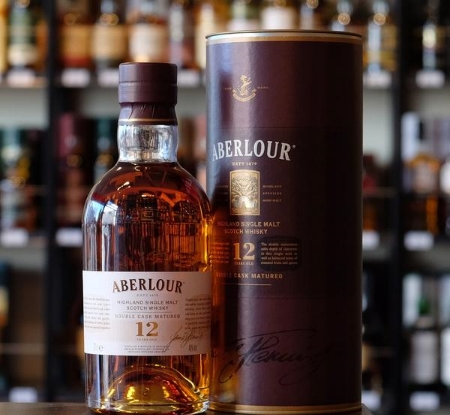 History
History
- uisge-beatha or water of life is malt whisky or grain whisky made in Scotland
- whisky is made from water, barley (germinated into malt) and yeast to make a malt beer, or wash, that is distilled twice to produce the raw liquor for maturing in oak barrels (American oak, sherry, port or bourbon casks)
- The first written mention of Scotch whisky is in the Exchequer Rolls of Scotland in 1495
- Whisky production was first taxed in 1644, causing a rise in illicit whisky distilling in the country (The Beatchach, Glenlivet & the Cabrach being particularly notorious)
- In 1782, more than 1,000 illegal stills were seized in the Highlands
- In 1824 George Smith responded to the ‘Excise Act’ of 1823 to establish the first legal distillery at Minmore in Glenlivet – not a popular move with the local illicit traders
- The whisky market historically has been subject to huge swings from the date of original legalisation in 1823
- Scotch whisky now must be made in a manner specified by law
- All Scotch whisky must be aged in oak barrels for at least three years
- In the past 10 years malt whisky production capacity has increased by over 60% to around 400 million litres per annum
- The worldwide boom in sales of single malts is comparatively recent, dating from the late 1960s & 1970s
- Speyside is a ‘protected region’ for Scotch Whisky distilling under UK Government legislation
- Speyside has over 50 distilleries (more than half the distilleries in Scotland) and is the largest whisky producing region of Scotland – although not all distilleries so designated actually belong to the area geographically designated Speyside
- Dufftown produces more whisky than any other town in Scotland and calls itself ‘the whisky capital of the world’, its heritage giving rise to the popular rhyme: ‘Rome was built on seven hills, Dufftown stands on seven stills’
- The distilleries in Speyside are mainly operated by leading international drinks conglomerates (Diageo,Chivas/ Pernod Ricard) but some are still family-owned (J & G Grant, Glenfarclas, William Grant & Sons, Glenfiddich)
- Macallan opened a new state of the art distillery and tourist centre in summer of 2018 at a cost of £150m, facilitating an increase of capacity by a third
- Scotland’s Malt Whisky Trailis a local tourism initiative featuring eight Speyside distilleries and the Speyside Cooperage in Craigellachie
- Single Malt Whisky is now a highly prized investment: the most expensive bottle of whisky sold at auction (to date) is a bottle of the 60 year-old Macallan Valerio Adami, distilled in 1926 and bottled in 1986, sold at Bonhams’ in Edinburgh for £848 750 in October 2018.
HM Revenue & Customs official figures for 2018 show:
- 2018 was the best ever year for Scotch whisky sales worldwide;
- Exports grew by 7.8% to £4.7 billion
- EU remains the largest export region, worth 30% of global value
- Blended whisky had global exports of £3.04 billion
- 8% growth in export of single malt whiskies
- Scotch is exported to 175 countries
- The fastest growing market is India, registering 34% increase over previous year
- The scotch whisky industry directly employs 10 000 people in Scotland, 7000 in rural areas, and supports 30 000 jobs in UK.
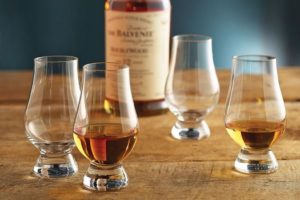 Local Distillery Visitor Centres:
Local Distillery Visitor Centres:
- Cheapest Tours
- Glen Moray: £5; Cardhu, Cragganmore, Benromach: £6
- Best Value Tastings
- Aberlour (£15 for 6 tastings);
- Glenfiddich (£10 for 3 tastings); Strathisla (£7.50 for 4 tastings)
- No Age Restrictions
- Glenfarclas; Glenfiddich; Benromach
- Booking Not Essential
- Aberlour; Glen Grant; Glenfiddich; Glenfarclas; Cardhu; Cragganmore; Strathisla; Glenlivet; Glen Moray.
Food & Drink?

- The Old Station Tearoom is open for light refreshment 10-12 and 2 – 4
- Aberlour has several take away outlets, from the chipper and the Chinese to the cafes and the Spey Larder delicatessen
- Selected local beers and a wide range of whiskies are available in The Mash Tun, The Aberlour Hotel, The Dowans Hotel, and in The Highlander Inn and The Copper Dog in Craigellachie.
Accommodation?

- B&B accommodation is best booked in advance – especially at peak season (and particularly during Spirit of Speyside festival, Aberlour Games week).
Wildlife?
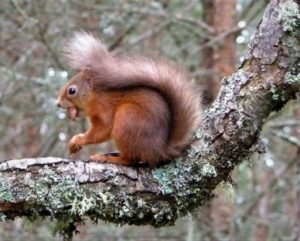
- See the blackboard and diary for up to date sightings
- The displays have information and illustrations about wildlife
- There are posters displayed on the front window indicating the butterflies that can be seen in the Park as well as the flora that is in season from month to month
- The area around Aberlour boasts a wide range of habitats thriving with wildlife: river, woodland, moorland and mountains.

- Around 60 species of birds and bats breed in this area
- Resident birds include birds of prey (golden eagle, osprey, buzzard, owls, hawks, hen harriers), smaller birds (crossbill, goldcrest, tree creepers and crested tits), together with 40 species of summer visitors (tree pipit, redstart grey wagtail, swallows, swifts)
- Large animals on Speyside include red deer, roe deer, red squirrels, wildcat, the Moray black cat, fox, badger, pine marten
- The course of the River Spey including the area in front of the SVC is a designated Site of Special Scientific Interest because of its populations of Atlantic Salmon, sea lamprey, otters and fresh water pearls
- The Moray Firth has whales, bottle nosed dolphins and seals.
Historic Sites?
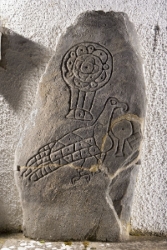
- The Visitor Centre reference Library is ideal for anyone wishing to find out more about this ancient and historic part of Scotland
- Pictish relics, standing stones and ancient castles are a feature of the Speyside landscape
- SVC can provide visitors with information about local resources that may be useful if they are undertaking genealogical research while in the area.
Railway?
- See display board with photographs of local railways, including the famous ‘Sputnik’ rail bus
- The Strathspey Railway was opened in 1863, between Dufftown and Abernethy
- Craigellachie junction was a key meeting point for the Speyside and Northeast of Scotland Railway to Elgin
- Carron had it’s own large goods yard where the majority of supplies, coal etc arrived for the local distilleries.
- Some distilleries even had their own steam engines within the grounds.
- The railway was a popular mode of transport for the Victorian tourists eager to explore the scenery and sport of Speyside – fishing and shooting
- The railway lasted for over a hundred years until it fell victim to the Beaching cuts in the 1960s
- The Strathspey Railway closed to passengers in October 1965 and to goods, including distillery freight, six years later.
Railway images copyright JM Boyes/ARPT
Leisure?
- Gentle walks around the village include the Linn Falls (less than a mile away, about a 45minute walk), up to and over the Victoria Bridge, along the riverbank both ways (Craigellachie 2 miles, Dailuaine 3 miles), or up to Archiestown (3 miles)
- More strenuous walks include the route to Dufftown over the Gownie (5 miles), up the Speyside Way as far as Ballindalloch (10 miles), or climbing Ben Rinnes (a stiff 2-3 hour climb affording splendid views)
- Other popular outdoor activities around the Speyside area include:
- Fishing (day permits for the Spey are available from the Aberlour Hotel, within the season from February to September
- Golf (local courses include Rothes, Dufftown and Ballindalloch, all open to visitors
- Mountain biking at Glenlivet Estate

- Horse Riding, Shooting and, in winter skiing and snowboarding at the Lecht ski area near Tomintoul
- Attractions further afield include Loch Morlich water sports up Speyside, Landmark Forest Adventure Park at Carrbridge, the Highland Wildlife Park at Kincraig and RSPB osprey hide at Boat of Garten.
Fishing?
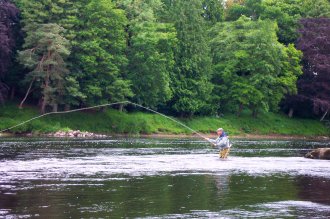
- Permits for fishing on the Spey on a daily basis are available from the Aberlour Hotel
- Fishing equipment (and possibly gillie support) can be hired from Brian Doran at the Gallery in Aberlour
- The fishing season lasts from February to October.
Families & Wee People?

Speyside’s Climbing Wall
- Games equipment is available from the Centre’s tub for a donation: basketball, football, balls, badminton, tennis, cricket, frisbees, boules
- The putting green is open most of the summer – clubs and balls can be hired from the Centre for a donation
- RSPB Children’s Guide to Wildlife can be accessed in the Centre
- Aberlour Community Centre has a gym, swimming pool and climbing wall available out of school hours
- The Playpark has various children’s amenities, principally a chute, swings, climbing tower and replica packhorse bridge
- Glen Grant Victorian Garden is an ideal place for families to picnic or gambol in the Speyside sunshine.
If you can’t find an answer to your query please use the contact form and we will do all we can to help
